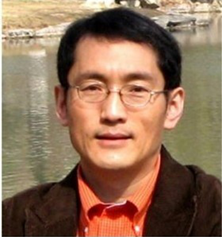搜索


报告时间:2019年3月18日(星期一) 上午9:30
报告地点:新葡的京集团350vip8888官网登录树华多功能厅
联 系 人:袁政
报告人:龙漫远 Edna K. Paazian Distinguished Service Professor, The University of Chicago Department of Ecology and Evolution 1101 East 57th Street, Chicago, IL 60637(mlong@midway.uchicago.edu)

报告人信息:
龙漫远为芝加哥大学终生教授, 在Science, Nature 系列和 Cell 杂志上发表多篇重要论文,是国际著名生物信息学家、新基因起源研究的创始人。龙漫远教授目前为国务院国家自然科学奖和国家自然科学基金会重点课题的特邀评审员。美国国家科学基金会,美国健康研究院,课题评审组成员; 加拿大,奥地利,爱尔兰进化与基因组基础研究课题专家组成员和特邀评审员。
龙漫远教授也是国际杂志:Journal of Molecular Evolution 副主编,Biology Direct等5个国际杂志的编辑; 是Nature, Science, PNAS等著名杂志的特邀评审人。
报告人研究背景:
An interesting problem in evolutionary biology is how genes with novel functions originate. The research in my laboratory focuses on this problem, although we are also interested in other issues of molecular evolution. Interest in evolutionary novelties can be traced back to the time of Darwin. However, studies of the origin and evolution of genes with new functions have only recently become possible and attracted increasing attention.
Although conceptual revolution is always what we wish to pursue, the available molecular techniques and rapidly expanded genome data from many organisms mean that searching for and characterizing new genes is no longer a formidable technical obstacle. Molecular and evolutionary studies have provided powerful analytical tools for the detection of the processes and mechanisms that underlie the origin of new genes. Two levels of questions about this process can be defined. First, at the level of individual new genes, what are the initial molecular mechanisms that generate new gene structures? Once a new gene arises in an individual genome in a natural population, how does it spread throughout an entire species to become fixed? And, how does the young gene subsequently evolve? Second, at the level of the genome, how often do new genes originate? If new gene formation is not a rare event, are there any patterns that underlie the process? And, what evolutionary and genetic mechanisms govern any such patterns?
I believe that an efficient approach to these questions is to examine young genes because their early processes of origination are directly observable. Pursuit of these problems requires an integrated approach incorporating molecular, genomic and population analyses. My lab applies such an approach to our studies. Using experimental and computational genomic analysis, we identified numerous new genes in Drosophila and mammalian genomes. Using molecular analysis, we revealed some important molecular evolutionary mechanisms responsible for their current gene structures. By evolutionary genetic analysis, we observed a significant role of the adaptive evolution in the determination of the fate of those new genes. Interesting patterns are observed associated with these new genes. We saw, we came, and we found....
近五年代表性论文:
-
Zhang L, Ren Y, Yang T, Li G, Chen J, Gschwend AR, Yu Y, Hou G, Zi J, Zhou R, Wen B, Zhang J, Chougule K, Wang M, Copetti D, Peng Z, Zhang C, Zhang Y, Ouyang Y, Wing RA, Liu S, Long M (2019) Rapid evolution of protein diversity by de novo origination in Oryza. Nature Ecology & Evolution DOI: 10.1038/s41559-019-0822-5.
-
VanKuren NW and Long M, 2018. Gene duplicates resolving sexual conflict rapidly evolved essential gametogenesis functions. Nature Ecology & Evolution 2(4):705-712.
-
Stein JC, Yu Y, Copetti D, ZwicklDJ, Zhang L, Zhang C , Chougule K, Gao D, Iwata A, Goicoechea JL, Wei S, Wang J, Liao Y, Wang M, Jacquemin J, Becker C, Kudrna D, Zhang J, Londono CEM, Song X, Lee S, Sanchez P, Zuccolo A, Ammiraju JSS, Talag J, Danowitz A, Rivera LF, Gschwend AR, Noutsos C, Wu CC, Kao SM, Zeng JW, Wei FJ, Zhao Q, Feng Q, El Baidouri M, Carpentier MC, Lasserre E, Cooke R, Rosa Farias DD, da Maia LC, Dos Santos RS, Nyberg KG, McNally KL, Mauleon R, Alexandrov N, Schmutz J, Flowers D, Fan C, Weigel D, Jena KK, Wicker T, Chen M, Han B, Henry R, Hsing YC, Kurata N, de Oliveira AC, Panaud O, Jackson SA, Machado CA, Sanderson MJ, Long M, Ware D and Wing RA, 2018. Sequence of 13 rice-related species unveils the Oryza pan-genome and the origin of genetic innovation. Nature Genetics 50, 285–296.
-
Lee YCG, Yang Q, Chi W, Turkson SA, Du WA, Kemkemer C, Zeng Z-B, Long M, Zhuang X, 2017. Genetic architecture of natural variation underlying adult foraging behavior that is essential for survival of Drosophila melanogaster. Genome Biol & Evol 9(5):1357-1369
-
Long M and Emerson JJ, 2017. The Gene Traffic in Evolution: the Compensational Role for the Meiotic Sex Chromosome Inactivation in Mammals. Current Biology 27 (11): R659-R661
-
Chen Z, Oliver B, Gao G and Long M, 2017. Expressed Structurally Stable Inverted Duplicates in Mammalian Genomes as Functional Noncoding Elements. Genome Biol & Evol 9 (4): 981-992
-
Zhang W, Landback P, Gschwend AR, Shen B and Long M (2015). New genes drive the evolution of gene interaction networks in the human and mouse genomes. Genome Biology, 16:202.
-
Zhang C, Gschwend RA, Ouyang Y, Long M (2014). Evolution of gene structural complexity: An alternative-splicing based model accounts for intron-containing retrogenes, Plant Physiology 165(1):412-23.
-
Gao G, Vibranovski MD, Zhang L, Li Z, Liu M, Zhang YE, Li X, Zhang W, Fan Q, Vankuren NW, Long M, Wei L, 2014. A long term demasculinization of X-linked intergenic noncoding RNAs in Drosophila melanogaster. Genome Res 24(4):629-38.



 首页
首页

 学院概况
学院概况

 师资队伍
师资队伍

 人才培养
人才培养

 招生就业
招生就业

 科学研究
科学研究

 平台基地
平台基地

 党群工作
党群工作

 校友之家
校友之家

 安全工作
安全工作

 网上办事
网上办事

 当前位置:
当前位置: